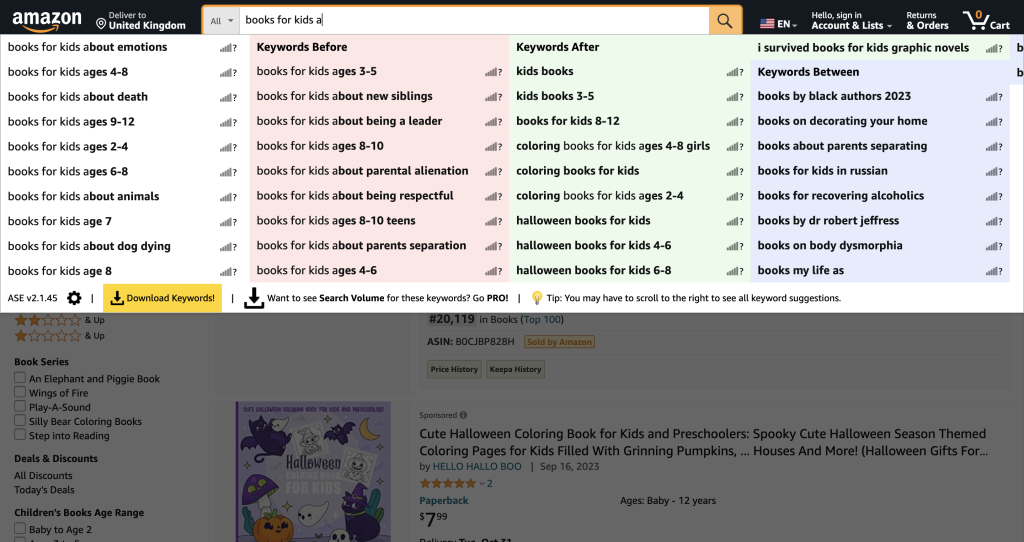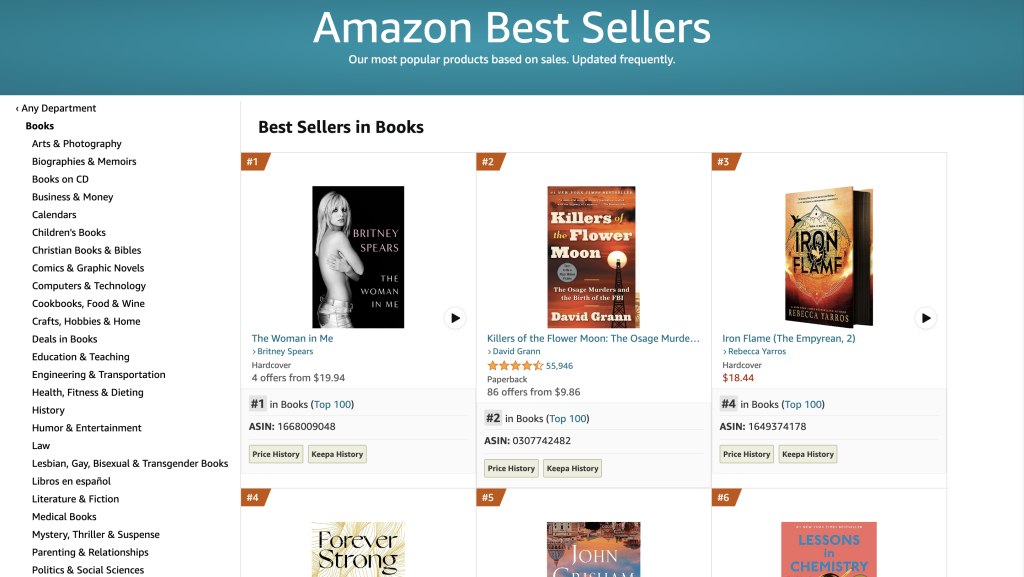Are you an aspiring author who’s published a book and experienced the frustration of waiting months without a single sale? Or perhaps you’re eager to become a self-published KDP (Kindle Direct Publishing) author but have no idea where to start? If you can relate to either of these situations, this article is tailored just for you because today we would discuss the best KDP keyword Research process to ensure publishing success!
Before we begin, let me introduce myself. I am Mary, a UX designer and a self-published author. My journey with KDP began in March 2023, and within just six months, I successfully sold over 6,800 paperback copies, all within the highly competitive Kids niche. To help you on your journey, I’ve decided to kick off a three-part KDP tutorial for beginners to address most of the concerns raised in the comments. This three-part series will cover:
Part 1 – KDP Keyword Research to Find Winning Keywords
Part 2 – Content and Cover Design to Create High-Quality Books
Part 3 – Launching and Marketing Your Books
In this article, we’ll focus on Part 1: KDP Keyword Research. I’ll share my step-by-step process using free tools. If you prefer a video format of this article and want to explore KDP keyword research in-depth, watch our comprehensive YouTube video. Click the link below to gain valuable insights, strategies, and a step-by-step guide to enhance your self-publishing journey.
But before we dive in, let’s briefly discuss keywords to establish a foundation and understand their importance.
What Are Keywords?
Amazon KDP keywords are like special words or phrases that authors choose to help people find their books on Amazon. Think of them as the secret codes that make your book show up when someone looks for it. These keywords are crucial because they help Amazon understand what your book is about and where it should be placed on virtual bookshelves. Essentially, they are the key to getting your book noticed. The more relevant and fitting your keywords, the better the chances of your book appearing when the right person is searching for it. And books that show up at the top of the search results have the best chance of being bought.
Choosing the right keywords involves more than just relevance; they should also be phrases that real people actually use when searching for books. Plus, they should attract the kind of audience ready to buy your book.
Part 1: KDP Keyword Research to Find Winning Keywords
Now, let’s get into the main business of the day: keyword research. I follow a three-step process using free tools, and I’ll guide you through each step:
Step 1 – Finding Keywords
I typically use Bookbeam, but for this guide, we’ll rely solely on free tools. Before we begin, you’ll need to install the “AMZ suggestion expander” and “DS Amazon Quickview” in your Chrome browser. These tools will be instrumental in our research.
Method 1 – Amazon Auto Suggestions
First, visit Amazon.com, which is a significant target market. However, if your book is in a different language or has a specific audience, feel free to use the appropriate Amazon site. Begin by typing a broad term you’re interested in, followed by a letter, to see what comes up in the search results. For example, if you want to sell books, you can type in “books for a,” “books for b,” and so on. If you have a specific target audience in mind, such as adults, kids, seniors, women, etc., you can type “books for adults a” or “books for kids a.”

Next, examine the auto-suggestions that appear. These are potential keywords in demand since Amazon is auto-filling them based on your input. The “AMZ suggestion expander” will provide more keywords before and after your search term. Look for keywords that stand out in green and red. These are the keywords that people are genuinely clicking on to find books, so add them to your spreadsheet.
Continue entering keywords followed by a letter, and add the suggestions to your spreadsheet for later analysis. At this stage, don’t worry too much about competition, as the most profitable keywords often have significant competition. Your strategy should focus on ensuring your books are unique and of high quality to stand out.
Method 2 – Amazon Bestsellers List
In this method, search for “Amazon Bestseller’s list” on Google and click on the result. Similar to the first method, use Amazon.com for your research. Instead of focusing on keywords at the top level, dive deeper into specific categories. Look for newly published books with few reviews (150 or less) and a Best Sellers Rank (BSR) of 50,000 or less. Additionally, seek out keywords that have appeared multiple times on the bestsellers’ list, as this suggests high demand. The “DS Amazon Quickview” tool will provide essential information about a book when you hover over it, including the publisher’s name, BSR, ratings, and the number of reviews.

Step 2 – Validating Keywords to Ensure Their Sales Potential
To validate keywords, consider two criteria:
- Ranking Criteria: Are there recently published books with 150 or fewer reviews on the first page? This indicates an opportunity for a new book with limited reviews to rank on the first page. Higher ranking means more sales.
- Selling Criteria: Are there three or four books using the exact keyword with a Best Seller Rank (BSR) of 50,000 or less, and 1-2 of them have fewer than 150 reviews on the first page? This suggests high demand and strong sales for that keyword.
Step 3 – Check Competition
The final step is to check the competition to prioritize your selected keywords. This step helps you identify the most suitable keywords for your book. The ideal scenario is to have 10,000 or fewer search results, although it’s not a strict rule.
Remember that not all books within the 10k search results may truly match your keyword. Sometimes, unrelated books or items may appear in the search results. So don’t be discouraged by high competition if the books in the search results aren’t directly related to your keyword.
Once you’ve collected and prioritized your keywords, you’re ready for the next steps: creating high-quality content and attractive book covers, which we’ll cover in Part 2 of this series. Be sure to subscribe so you don’t miss it.
Finally, as your books gain traction, focus on building your brand by becoming an authority on specific keywords. Develop your author profile and offer top-quality content to gain your readers’ trust and reduce advertising expenses. Building your brand through a website and social media presence can come later, once you’ve established a presence on Amazon.
That wraps up today’s guide. If you found this article useful, please like and share it with friends and family. I look forward to seeing you in Part 2 of this series, where we’ll dive into content creation and cover design. Stay tuned for more valuable insights and tips to achieve success on KDP.
3 Comments